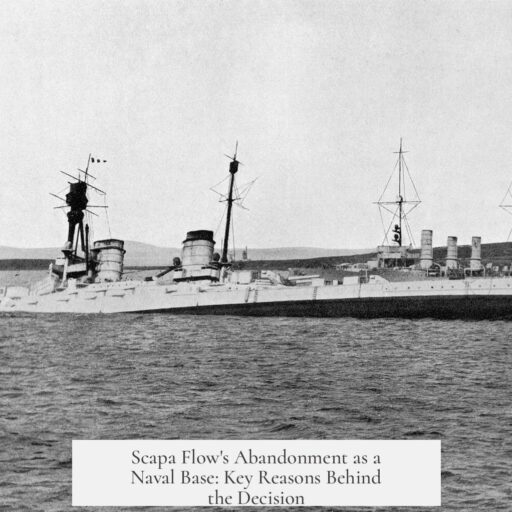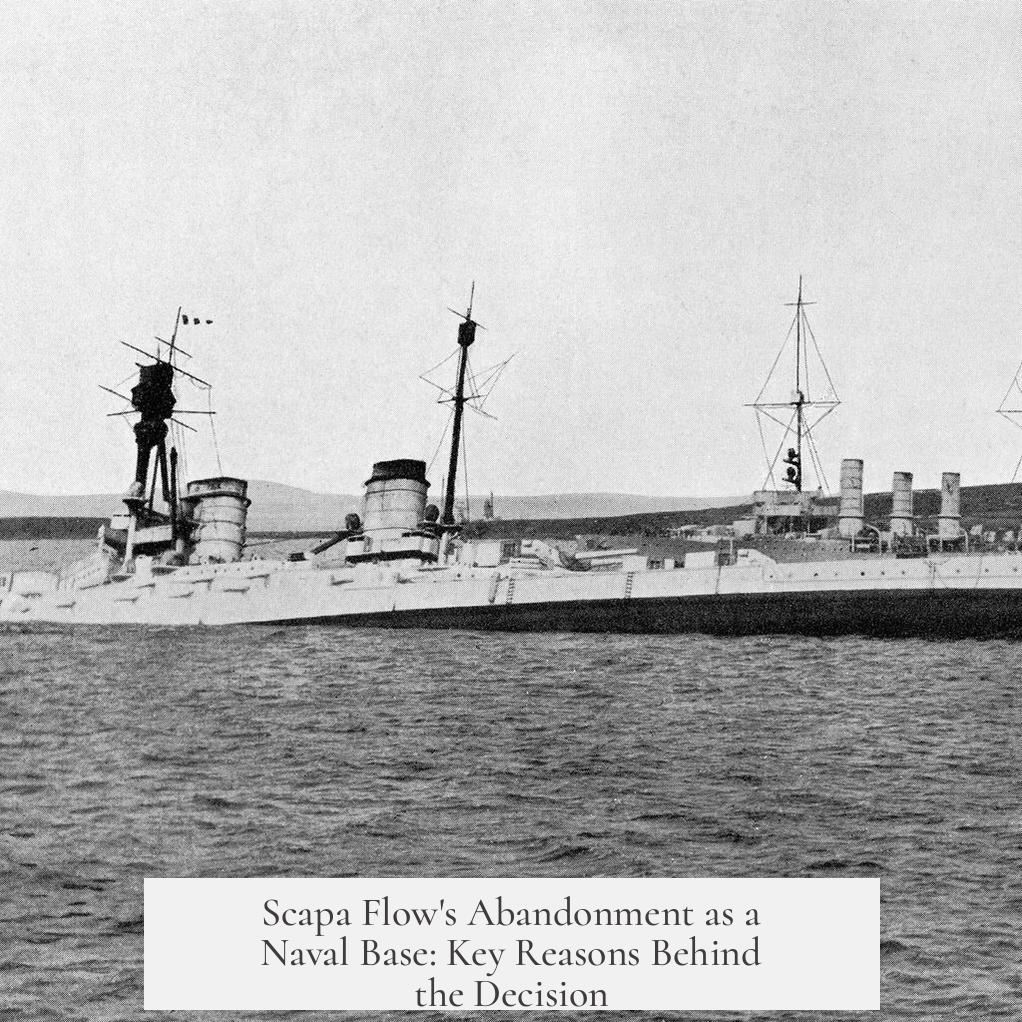Scapa Flow was abandoned as a naval base due to a combination of high maintenance costs, limited facilities, and a shift in strategic priorities following World War II. Its remote location made upkeep expensive. The base had minimal repair facilities, inadequate accommodation, and little for rest or recreation. As a result, the Royal Navy used it mainly during wartime and rarely in peacetime due to these practical limitations.
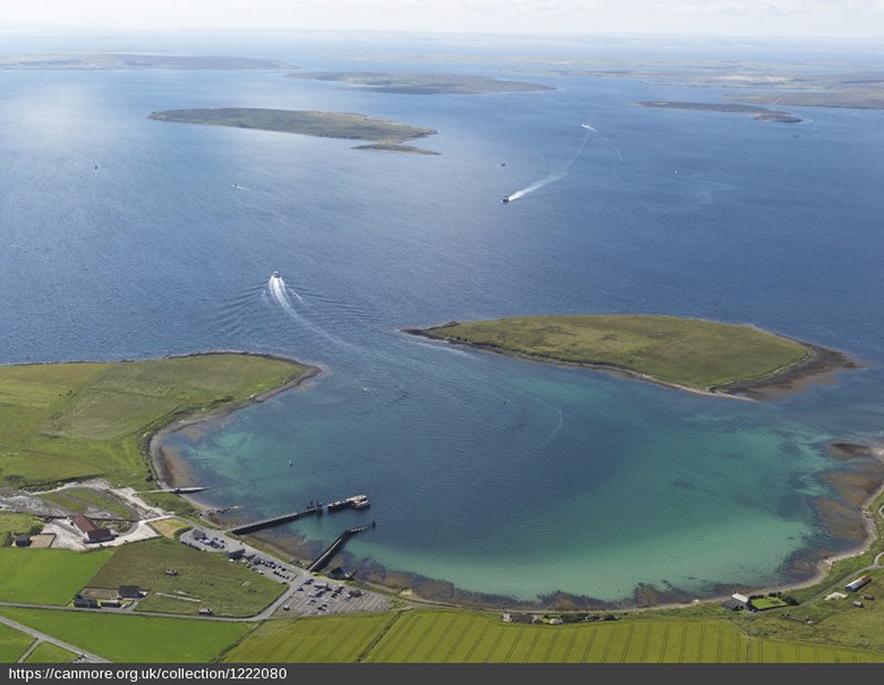
Initially, Scapa Flow held strategic value. It provided a strong position to control the North Sea and respond swiftly to German naval movements, especially those from Wilhelmshaven and the Kiel Canal. However, after World War II, the naval threat dynamics shifted during the Cold War. The Soviet Union emerged as the main threat, but it had limited access to the North Sea. Key naval locations such as Wilhelmshaven and Kiel came under NATO control, diminishing Scapa Flow’s strategic relevance.
Moreover, the perceived threats during the Cold War focused on protecting Britain’s vital shipping lanes. Bases situated further south, closer to main ports and shipping routes, better suited this role. Scapa Flow’s proximity to Soviet bombers made it vulnerable and less defensible. Its location also made offensive operations against the Soviet coastline impractical due to exposure and limited strategic value.
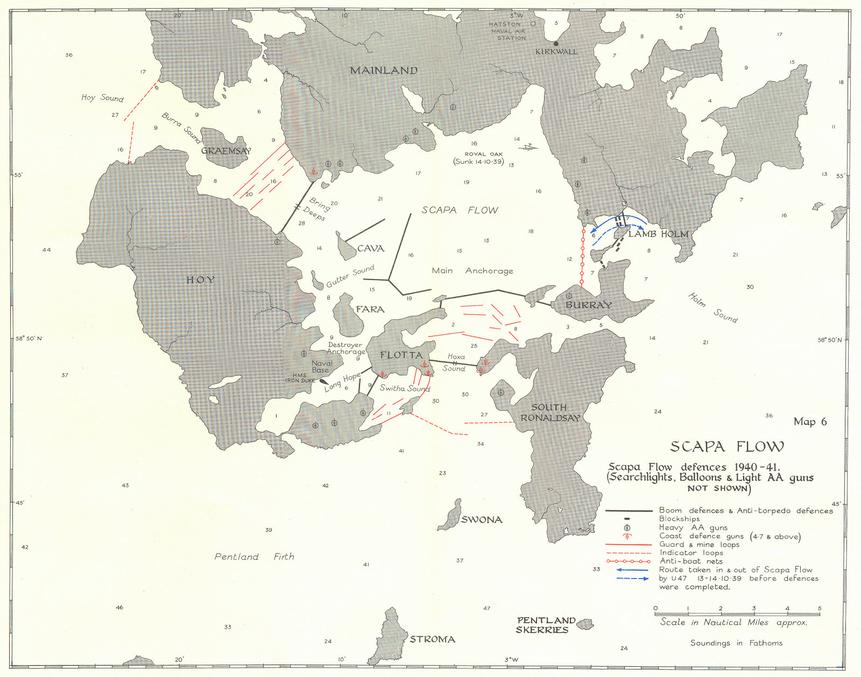
The Royal Navy faced budget reductions in the post-war period. Spending on a costly, underutilized base was unjustifiable. Resources were directed to facilities that supported evolving naval strategies in the Cold War context. This combination of high maintenance costs, scarce amenities, and diminished strategic importance led to the closure of Scapa Flow as a naval base in 1959.
- Scapa Flow had limited facilities and was costly to maintain.
- It was strategically vital in World War II but lost importance during the Cold War.
- Shifting naval threats reduced its defensive and offensive value.
- Budget constraints favored bases with better access to key shipping lanes.
- The base was officially closed in 1959 due to these factors.
Why Was Scapa Flow Abandoned as a Naval Base?
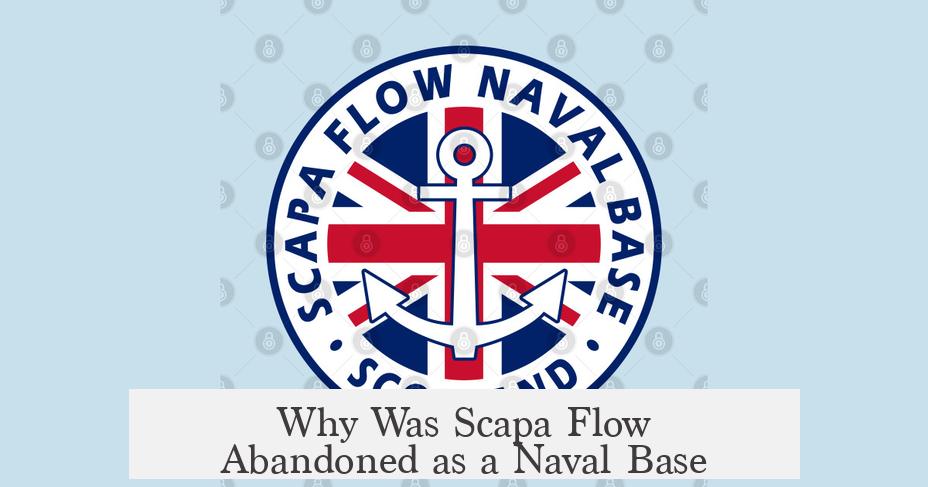
If you asked why Scapa Flow, once a buzzing royal naval hub, turned into peaceful waters with no ships in sight, the answer is simple: it outlived its strategic usefulness and the cost of keeping it running was just too high.
Let’s take a closer look at this fascinating slice of naval history, weaving together its unique story with solid facts and some practical insights.
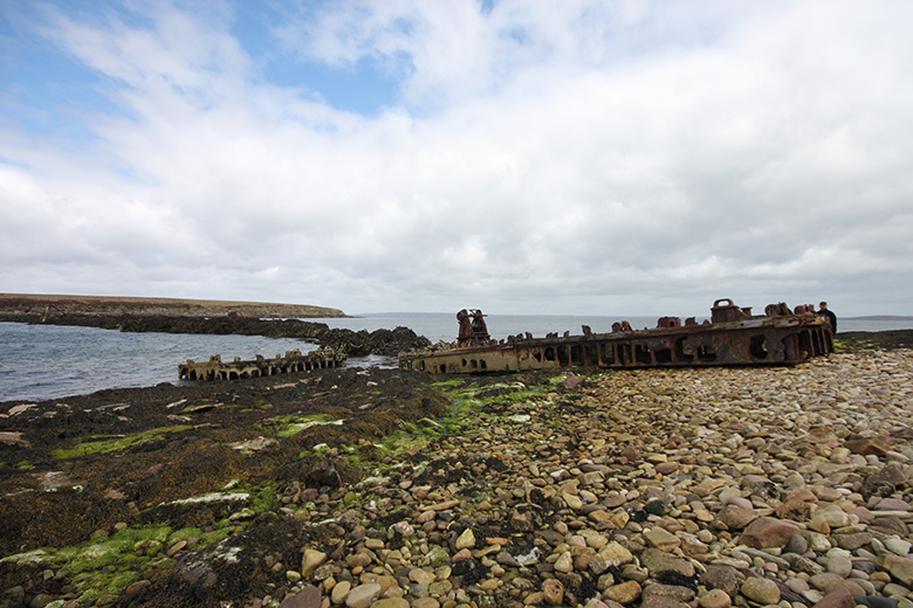
Scapa Flow, nestled in the Orkney Islands, was no ordinary spot for the Royal Navy. During World War I and II, this remote waterway served as a key base to control the North Sea and keep German naval forces in check. It was a perfect location for quick military responses.
But after the Second World War, the tides began to turn.
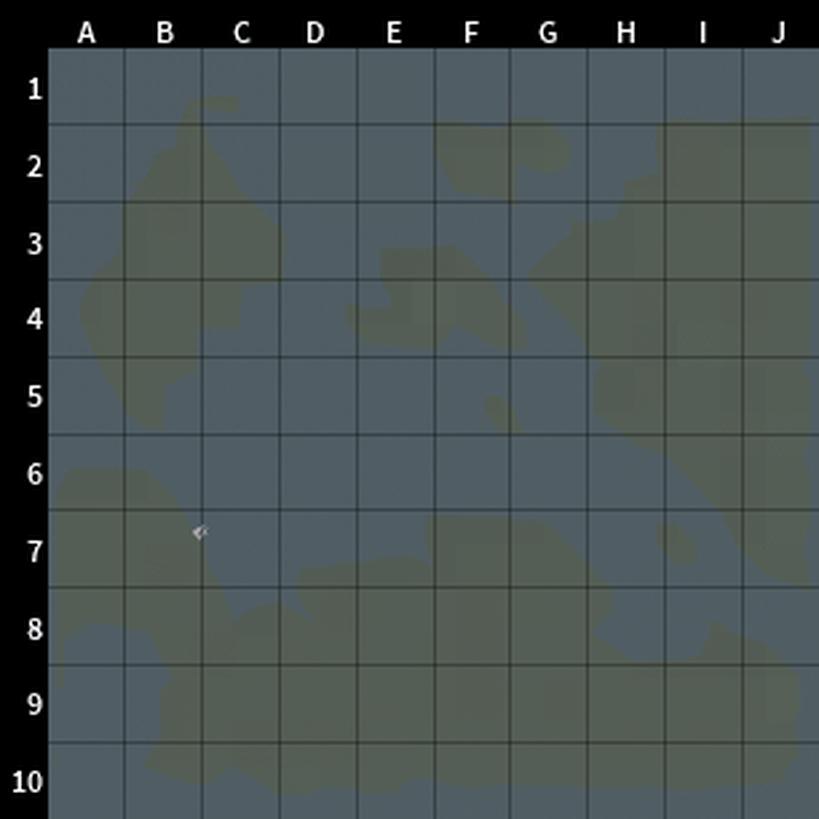
The Pinch of Perks: Why Scapa Flow Was Not a Comfortable Home for Ships
Ever tried camping somewhere with no toilets or even a bench to sit on? That’s pretty much what life was like at Scapa Flow peacetime. The base had very limited facilities and hardly any accommodation. Rest and recreation? Practically non-existent.
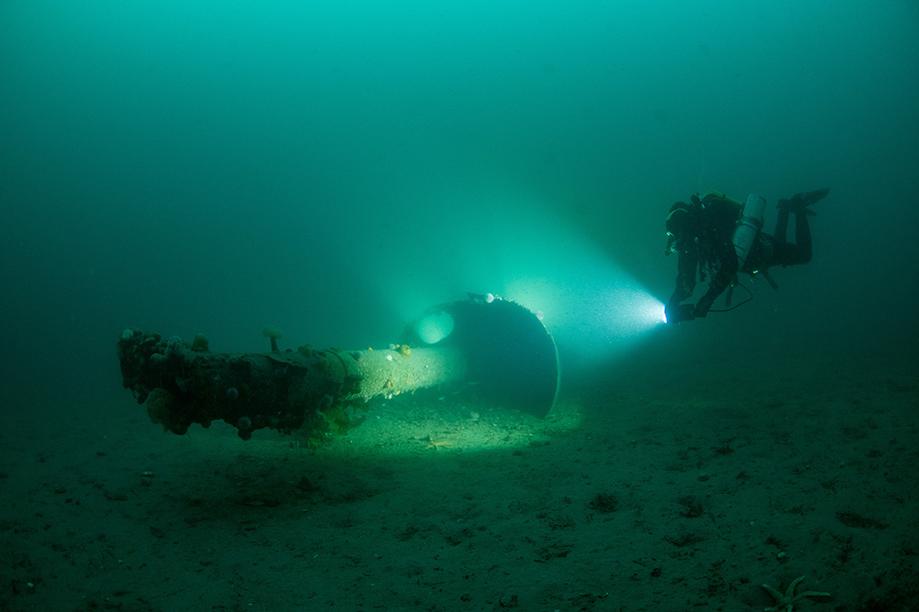
This limited infrastructure meant the Royal Navy viewed Scapa Flow as a war-time asset only. When peace returned, the ships and sailors moved away, leaving it more or less abandoned.
Imagine spending millions to maintain a place that your workforce rarely visits, let alone loves. The maintenance costs for Scapa were sky-high due to its remote location. Supplying essentials, fixing docks, and supporting a fleet thousands of miles from main ports was a logistics headache and a budget drain.
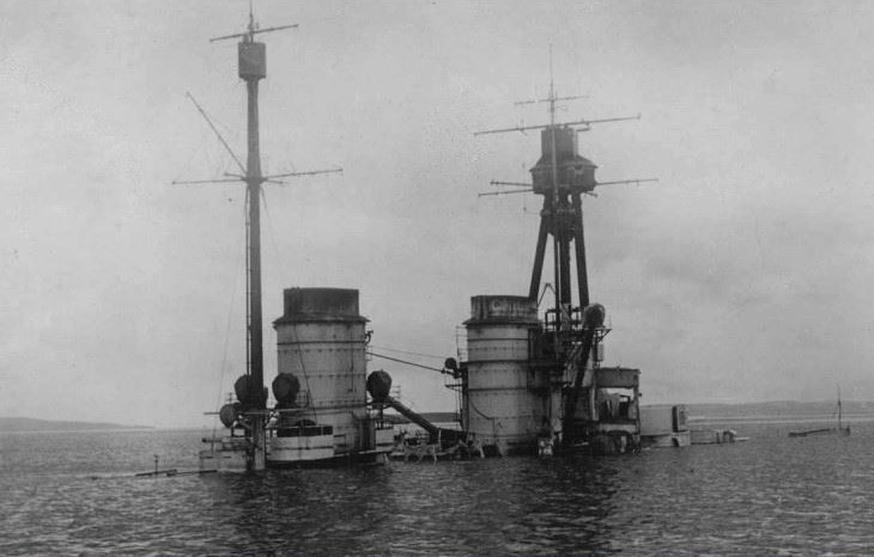
During a post-war period marked by defence cuts, the Royal Navy found it hard to justify dropping funds on a base that was almost a white elephant in peaceful times.
Changing the Game: The Shift in Strategic Purpose
During its heyday, Scapa Flow was strategically perfect. It dominated the North Sea, ready to stop German forces from Wilhelmshaven or the Kiel Canal. But after 1945, the nature of threats changed dramatically.
The Cold War brought a new villain: the Soviet Union. Unlike the Germans, the Soviets did not have easy access to the North Sea. Both Wilhelmshaven and Kiel became allied ports under NATO, removing the immediate threat from that region.
Instead, the concern shifted to protecting Britain’s vital shipping lanes, routes that were best defended by bases closer to the southern ports. Scapa Flow, located far to the north, just wasn’t in the right place anymore.
On top of that, Scapa Flow was close to the probable paths of Soviet bombers, making it a vulnerable target. It was like parking your car in front of a bullseye.
Plus, it offered limited opportunities for offensive operations against the Soviet coastline. It was strategically exposed and hard to defend effectively.
The Final Straw: When Strategy Meets Budget
When you combine the lack of amenities, the enormous costs of maintaining a remote base, and the shift in naval strategy, the writing was on the wall. No wonder that by 1959, Scapa Flow was officially closed.
The Royal Navy decided to funnel resources into bases that mattered more in the new world order—ports closer to the south of England, better suited to the actual threats and easier to maintain.
So, what can we learn from Scapa Flow’s story?
- Location matters, but only as long as it fits current needs.
- Infrastructure matters as much as strategy; a base without facilities is tough to keep functional, especially in peacetime.
- Adaptability is key; forces and threats evolve, and military resources must keep pace.
Today, Scapa Flow is famous for its calm beauty and as a haven for divers exploring the sunken ships from two world wars. Its peace contrasts sharply with its roaring past.
In a way, Scapa Flow teaches a lesson about obsolescence and change that resonates beyond military strategy. It’s a reminder that holding onto the past—no matter how glorious—can drain resources and distract from pressing new realities.
What’s your take? Could any naval base remain relevant forever, or is strategic relocation inevitable as world dynamics shift?
Whatever your thoughts, Scapa Flow’s journey from a vital naval stronghold to a historic, tranquil site is a perfect case study of how geography, economics, and geopolitics shape the lifespans of military hubs.
In summary, Scapa Flow was abandoned because it was too expensive to maintain, lacked necessary facilities for peacetime use, and lost its strategic importance once the Cold War redefined naval threats.
And really, it’s a pretty good call. Why keep an expensive, vulnerable base that no longer serves your defense goals?
Practical Reflection
If you ever find yourself managing resources or infrastructures, remember Scapa Flow. Sometimes, the smartest choice is to retire what’s no longer fitting the purpose. Keeping a ghost base just because it was important once is a recipe for wasted effort and funds.
So, should old bases be preserved or adapted? While historical value matters, military efficiency does too. The answer probably lies in balancing memory with modern needs—something Scapa Flow could not manage.
